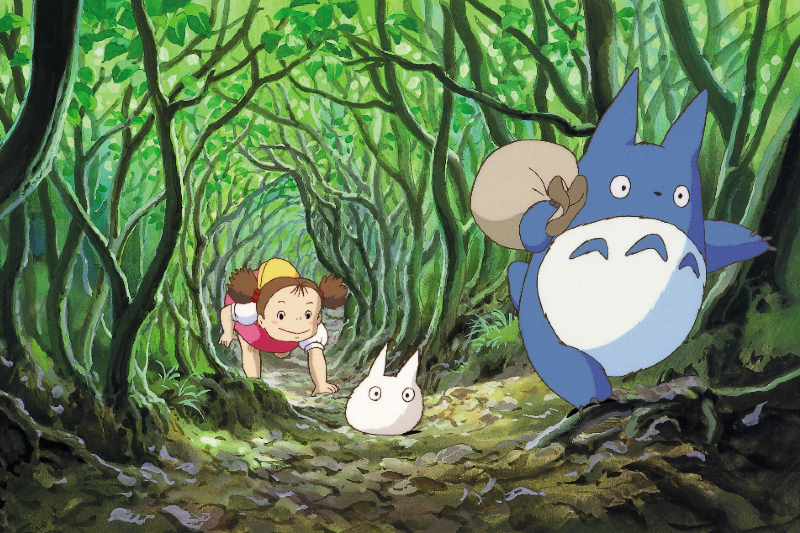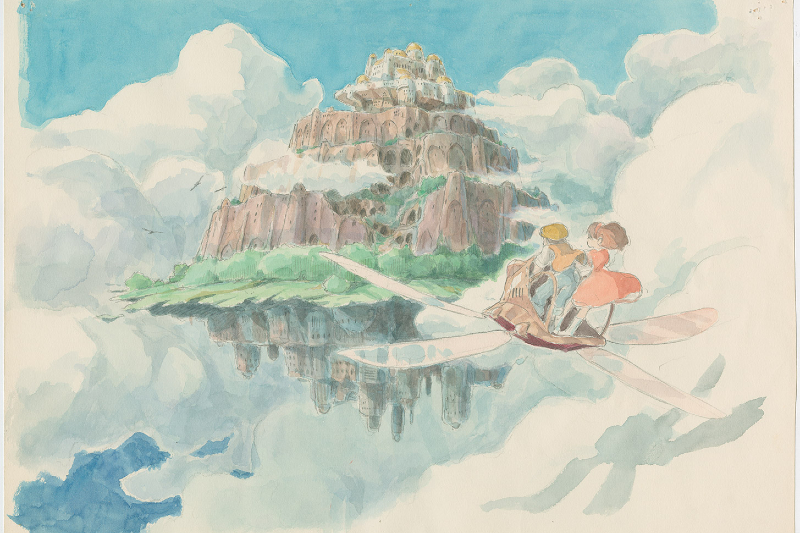If there is one thing that marks the art that reaches universal hearts, it is that it turns life’s inward complexity face out through characters and mythology. Hayao Miyazaki, for example, takes his audience deep into youthful worlds steeped in Japanese folklore and allows them to follow characters through life’s dark labyrinths and enchanted corridors.
Since 1985, Miyazaki has populated these worlds with strange, wonderful, and complex creatures through Studio Ghibli, the artist’s animation film studio in Koganei, Tokyo. The animation director welcomed international movie audiences into adventures marked by contradiction between the good and the bad and the fantastic and the foreboding, which characterizes the whole concept of taking a journey. Now people have a chance to visit those worlds themselves — in the West and in the East.

Hayao Miyazaki, a Retrospective
“Hayao Miyazaki has a singular ability to capture how we perceive life, with all its ambiguities and complexities,” exhibitions curator Jessica Niebel said in an Academy Museum statement.
In September 2021, the new Los Angeles museum opened its doors to celebrate the globally acclaimed director in Hayao Miyaski — the museum’s inaugural temporary exhibition and the first North American museum retrospective dedicated to the acclaimed artist and his work.

With more than 300 objects, the exhibition is designed as a pilgrimage through seven thematically organized sections of Miyazaki worlds. Visitors will get to explore and interact with several animated feature films, including My Neighbor Totoro, Princess Mononoke, Howl’s Moving Castle, and The Wind Rises. The filmmaker’s six-decade career is laid out through a dynamic presentation of original character designs, storyboards, layouts, backgrounds, posters, and cels.
“Miyazaki’s genius is his power of remembering what he sees. He opens the drawers in his head to pull out these visual memories to create characters, landscapes, and structures that are bursting with originality,” producer and Studio Ghibli co-founder Toshio Suzuki said.
Large-scale projections of film clips and immersive environments recreate actual Studio Ghibli settings. Some pieces on public view at the Academy appear outside of Japan for the first time.
To enter the exposition, visitors follow four-year-old Mei, from My Neighbor Totoro, into the Tree Tunnel gallery, a transitional space that serves as an in-between place, a doorway into and out of fabled lands. Further on, the Creating Worlds gallery evokes the creator’s contrasting contexts, hovering between the beautiful and the bizarre, bouncing between nature’s peace and fire-stung industrial settings dominated by labor and technology.
The Sky View installation flies through Miyazaki’s otherworldly architecture — Ponyo’s underwater realm and Porco Rosso’s porcine view from the sky. Visitors can enjoy quiet contemplation, looking down on Jiro Horikoshi’s vista, the real-life WWII aviation found in The Wind Rises.
Open until June 5, you can learn more and learn how to visit the Southern California retrospective through the Academy Museum website.
Related Guides
Studio Ghibli Theme Park
「ジブリパーク」の開園日が発表されました。 pic.twitter.com/weMpQjsyEV
— スタジオジブリ STUDIO GHIBLI (@JP_GHIBLI) January 27, 2022
Enthusiasts up for a jaunt even further afield can visit Japan’s Studio Ghibli theme park when it opens to the public on November 1, 2022. Finally (mostly) finished several years after its announced plans in 2017, the park will have five lands staggering openings over the next few years. Like the L.A. exhibit, park visitors can voyage through Miyazaki’s magical, morphing fables.
Variety cites that local reports into the rising grounds include Princess Mononoke’s arboreal ardor during the Muromachi period and an almost 53-foot tall Howl’s Moving Castle, complete with multiple floors to explore. The last two lands, expected to open in March 2024, remain unrevealed.
While there will be rides in Studio Ghibli’s theme park, there’s no plan for large-scale roller coasters under Miyazaki and the studio’s watch. Miyazaki insisted that no trees be cut down during construction. Leaving the woods is meant to immerse inhabitants, however temporary, in an experience aligned with the bucolic nature where mystic realms reveal themselves.
During a May 2019 press conference, producer Suzuki joked about the maker’s creative contribution to the park.
“He can’t leave anything up to other people. He’s a meddlesome old man,” Suzuki said.
Studio Ghibli theme park is being built near Nagoya in central Japan, threading through Aichi Commemorative Park. By train, it’s about three hours from downtown Tokyo to Nagoya Station, followed by about an hour-long trip to the park proper.
Read More: Aero’s Semi-Private Airline — Luxury Travel to Top Ski Spots




